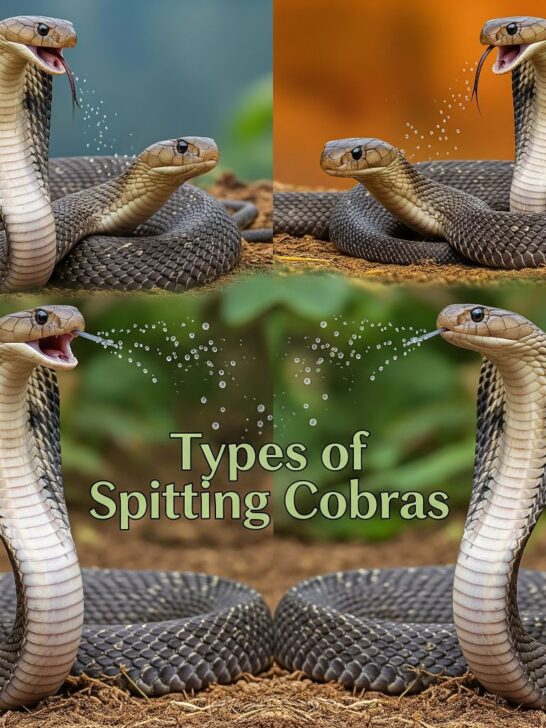Spitting cobras, belonging to the genus Naja, are renowned for their remarkable ability to eject venom from their fangs with precision. This fascinating adaptation not only serves in self-defense but also plays a significant role in their survival. In this article, we will explore the unique features of spitting cobras, their venom, behaviors, habitats, and the evolutionary adaptations that make these snakes exceptional.
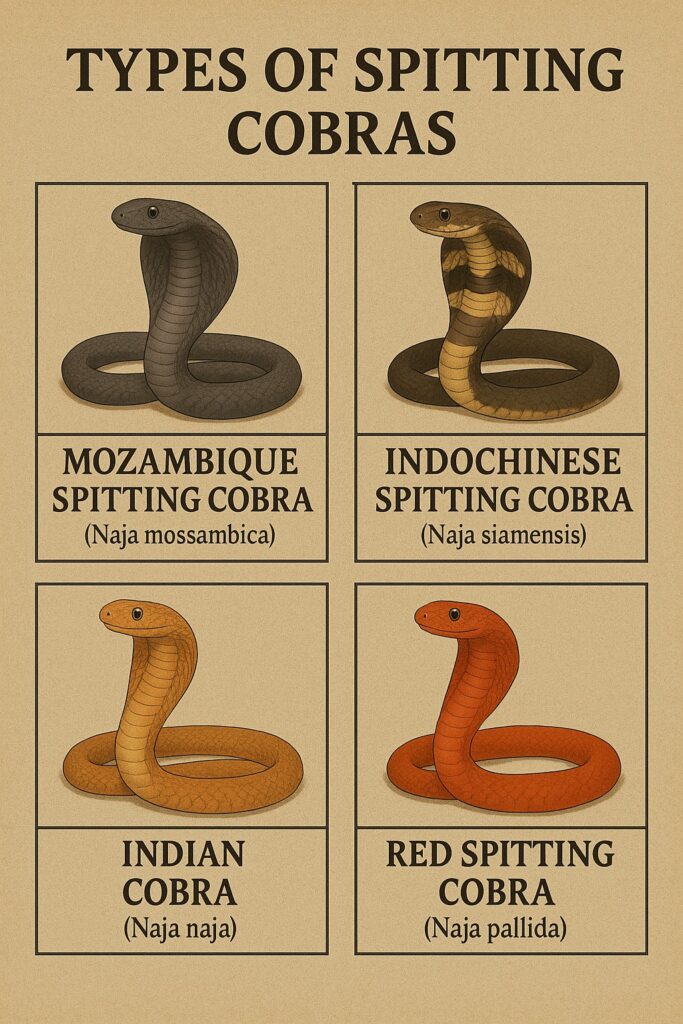
Post Contents
- Spitting Cobras: Nature’s Venomous Sprayers
- Venom Composition and Effects
- 1. Rinkhals (Ring-Necked Spitting Cobra) (Hemachatus haemachatus)
- 2. Philippine Spitting Cobra (Naja philippinensis)
- 3. Black-Necked Spitting Cobra (Naja nigricollis)
- 4. Red Spitting Cobra (Naja pallida)
- 5. Siamese Spitting Cobra (Naja kaouthia)
- 6. Javan Spitting Cobra (Naja sputatrix)
- 7. Mozambique Spitting Cobra (Naja mossambica)
- 8. Indochinese Spitting Cobra (Naja siamensis)
- 9. Equatorial Spitting Cobra (Naja sumatrana)
- Evolutionary Significance
- Benefits of Spitting
- Conclusion
Spitting Cobras: Nature’s Venomous Sprayers
Spitting cobras are a group of venomous snakes characterized by their ability to intentionally spray venom at potential threats. Unlike typical snakes that rely on biting to envenomate their prey or defend themselves, spitting cobras can lunge and aim their venom, primarily targeting the face and eyes of their aggressors. This ability is a remarkable instance of evolution, with distinct species developing this skill independently.
Unique Adaptations
- Targeted Venom Spray: Spitting cobras can spray venom up to three meters (about ten feet) away. Research indicates that they can consciously aim for the eyes and face of predators, achieving an accuracy rate of about 90%. This adaptation minimizes the risk of close encounters during conflicts.
- Adjustable Dosage: Spitting cobras can adjust the amount of venom they spray based on the size and distance of their target. This ability enhances the effectiveness of their defense mechanism.
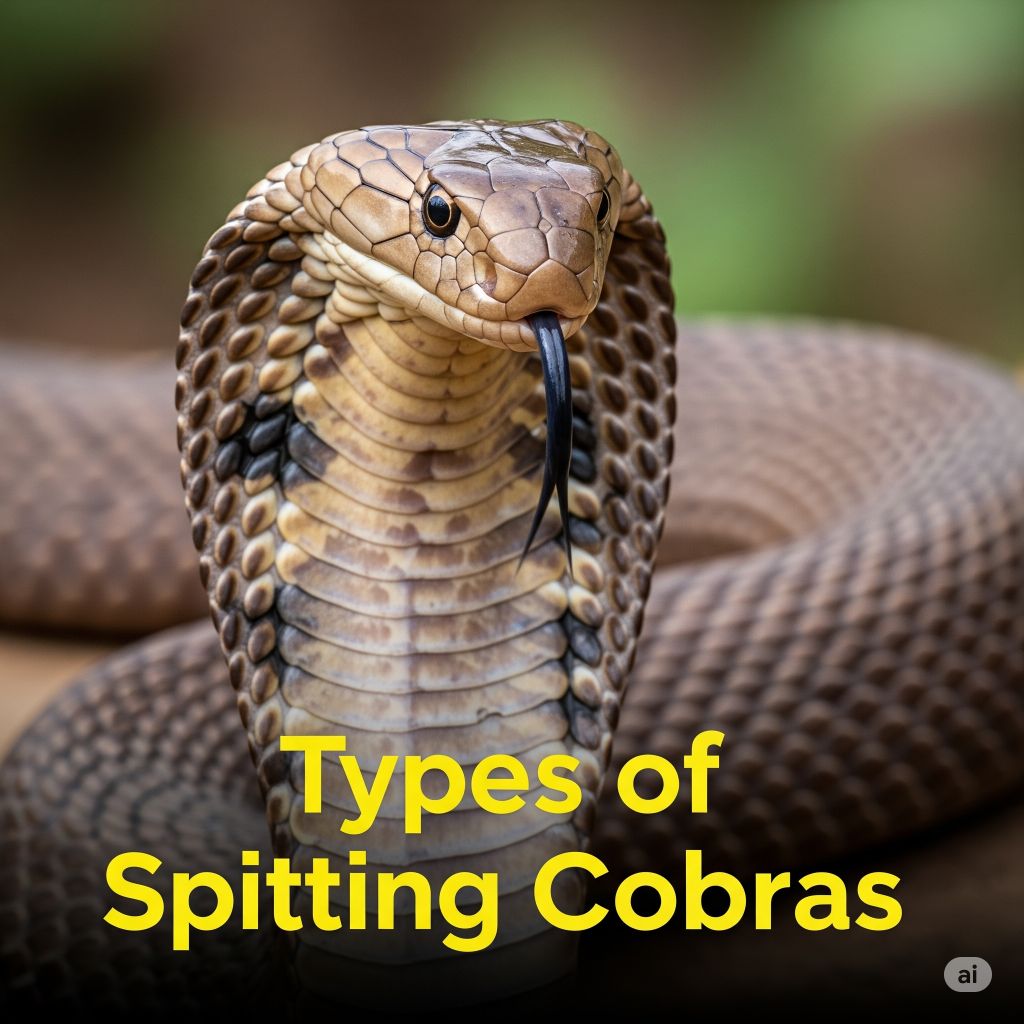
Venom Composition and Effects
Spitting cobra venom is distinct both in composition and function. The venom has dual roles: it acts as a toxic agent when sprayed (toxungen) and as traditional venom delivered through bites.
Characteristics of the Venom
- Cytotoxic Effects: The venom of spitting cobras is primarily cytotoxic, causing significant pain and tissue damage upon contact. This is in contrast to many other cobras that predominantly produce neurotoxic venom.
- Toxungen: When sprayed, the toxungen can cause temporary or permanent blindness if it comes into contact with the eyes. While it may not severely harm intact skin, it can result in delayed blistering.
- Injection Mechanism: Spitting cobras can also deliver venom through a bite, which is typically more potent than the amount sprayed. Although they primarily use spitting as a defense mechanism, successful envenomation through bites facilitates the capture of prey.
Venom Delivery Mechanism
The venom is expelled using specialized muscles that squeeze venom glands, allowing the substance to be ejected through forward-facing holes near the fang tips. Some cobra species exhibit hissing and lunging behaviors while spitting, which may amplify their threat display, though research suggests these actions do not significantly aid in venom propulsion.
1. Rinkhals (Ring-Necked Spitting Cobra) (Hemachatus haemachatus)
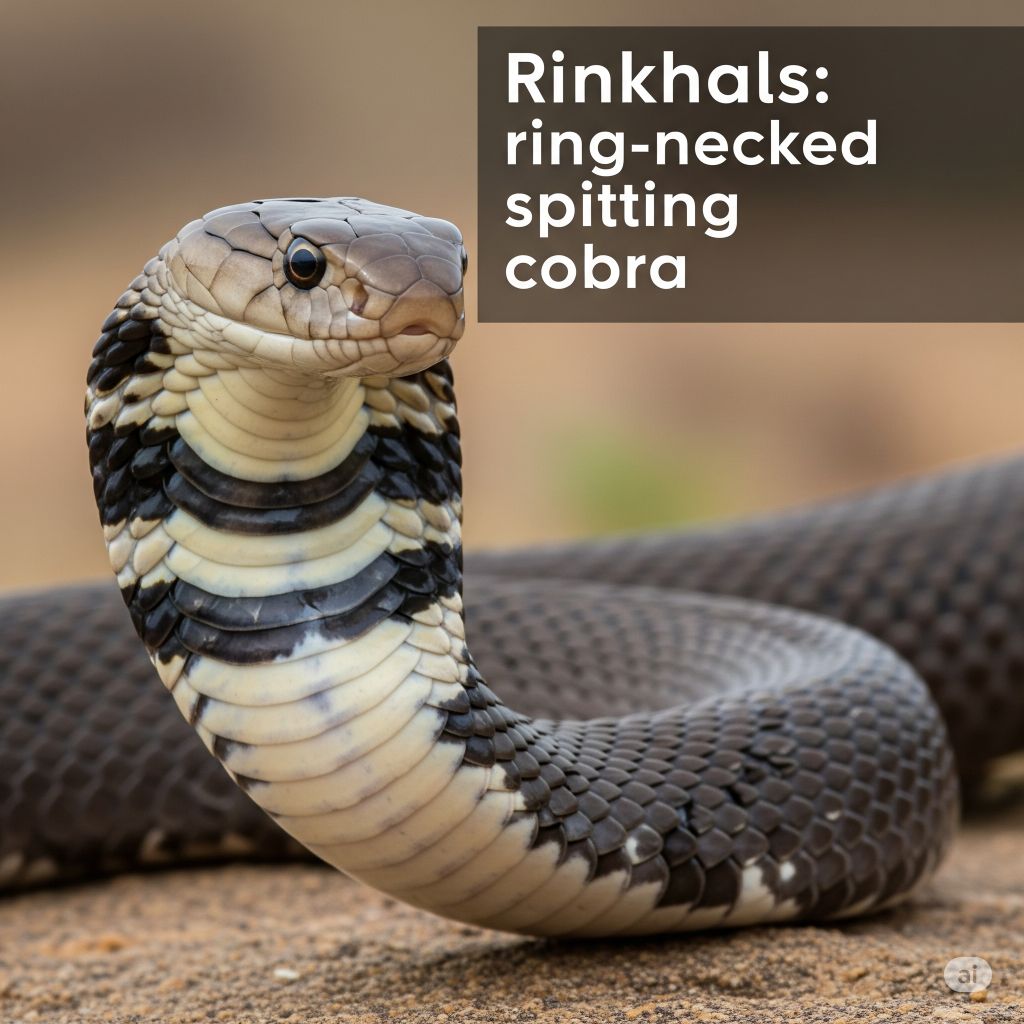
Characteristics
- The Rinkhals is characterized by its distinctive ringed neck. This feature is particularly prominent when the snake feels threatened.
- It has a dark brown or black body with lighter bands or rings around the neck.
Behavior
- The Rinkhals is known for its defensive posture. When threatened, it raises its body, flattens its neck, and hisses loudly.
- Unlike many other cobras, the Rinkhals has a unique behavior: it plays dead when captured or feels threatened.
Venom
- The venom of the Rinkhals is potent and primarily neurotoxic, affecting the nervous system of its prey.
- It can cause severe pain, swelling, and systemic symptoms in humans, but bites are relatively rare.
Geographic Range
- The Rinkhals is found in southern Africa, especially in South Africa, Namibia, and Botswana, preferring savannas and grasslands.
2. Philippine Spitting Cobra (Naja philippinensis)
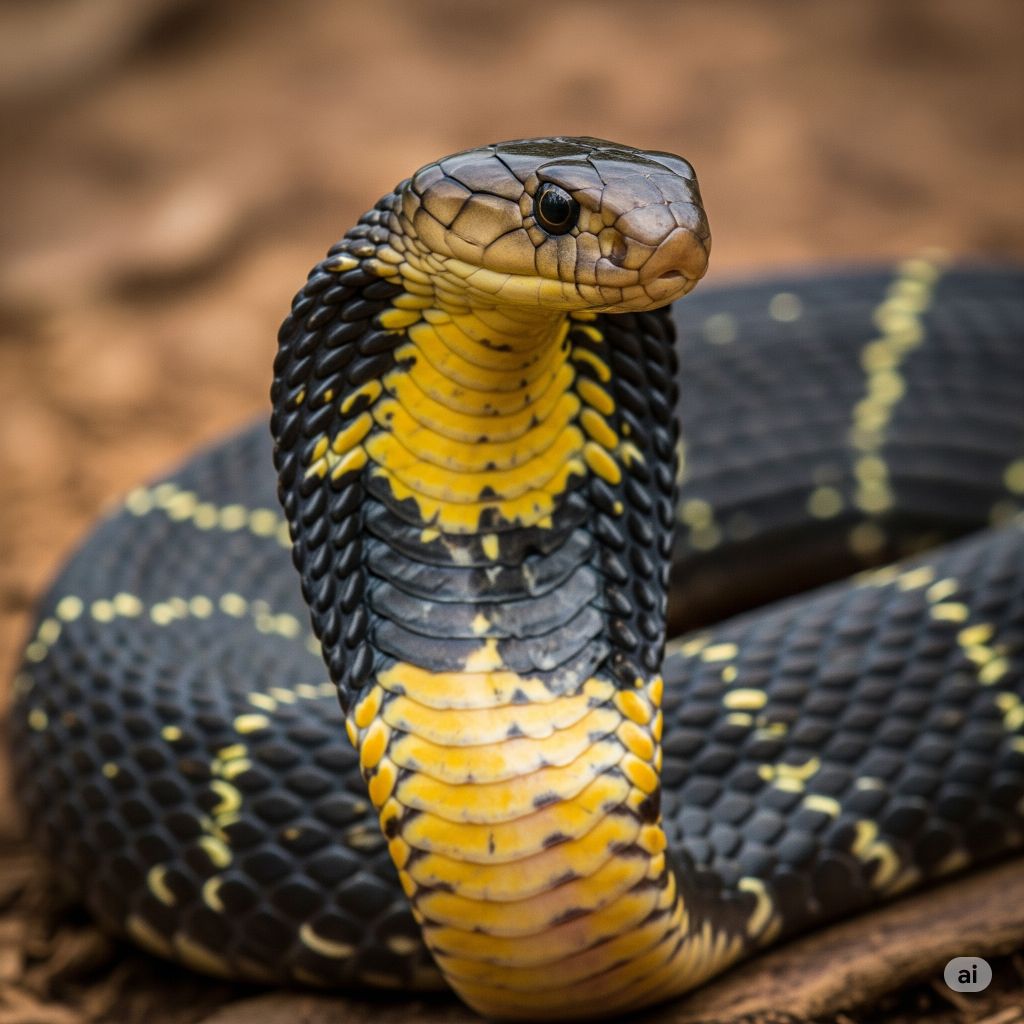
Characteristics
- This species has a slender body with a variable coloration ranging from brown to light yellow.
- It typically displays a distinct hood, which it can expand when threatened.
Behavior
- The Philippine spitting cobra is known for its quick strikes and is capable of accurately spitting venom at aggressors from several meters away.
- It is primarily nocturnal and can be found in various habitats, including forests and grasslands.
Venom
- The venom is highly toxic and can cause severe tissue damage and pain, especially if it enters the eyes.
- Its venom contains both neurotoxic and cytotoxic components, affecting the nervous system and causing local tissue necrosis.
Geographic Range
- Endemic to the Philippines, it inhabits islands like Luzon and Mindoro and prefers areas close to water sources.
3. Black-Necked Spitting Cobra (Naja nigricollis)
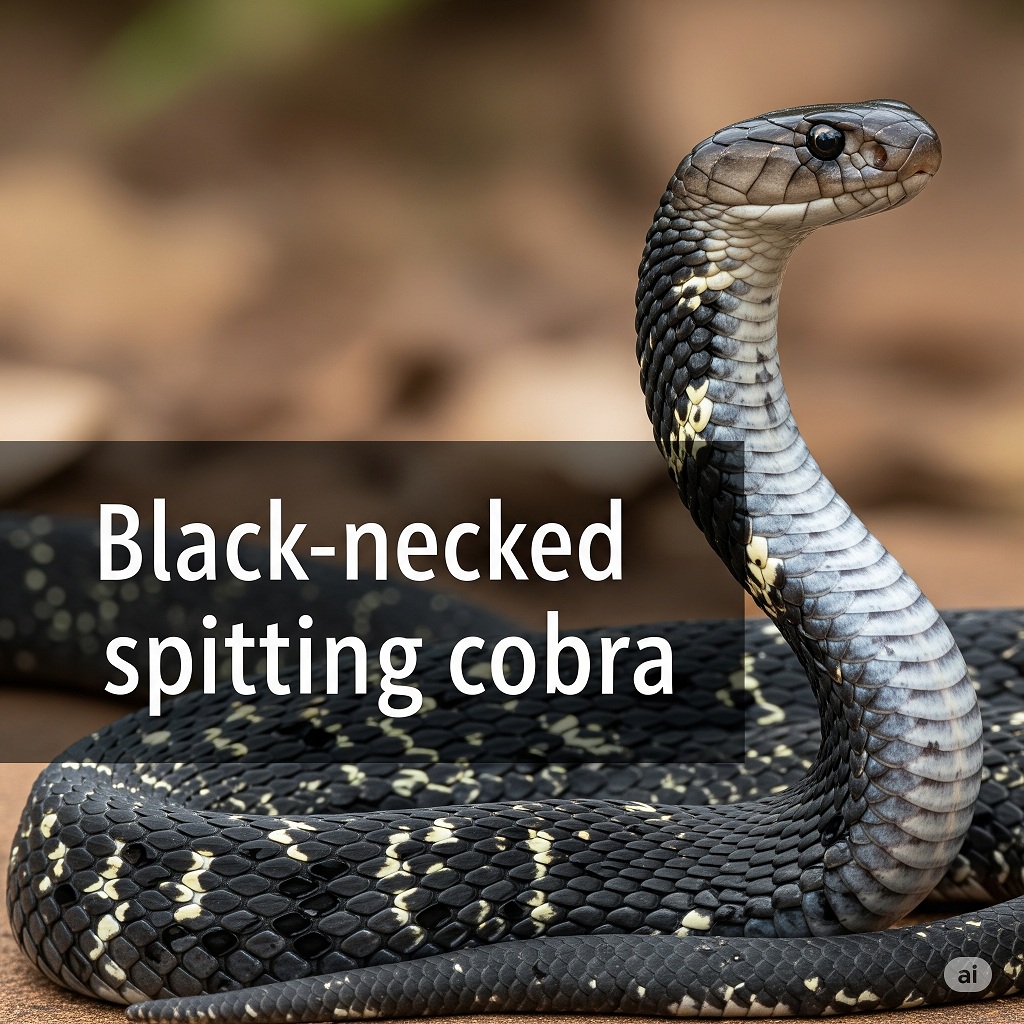
Characteristics
- The Black-necked spitting cobra has a striking appearance with a dark-colored neck and a lighter body.
- It can reach lengths of up to 1.5 meters (5 feet) and is known for its prominent hood.
Behavior
- This species is known for its defensive behavior, including hissing loudly and raising its hood when threatened.
- It has a reputation for being aggressive, especially when cornered.
Venom
- The venom is both cytotoxic and neurotoxic, capable of causing severe pain, swelling, and potential long-term damage.
- Its venom can affect the nervous system and lead to systemic symptoms.
Geographic Range
- The Black-necked spitting cobra is found in various parts of sub-Saharan Africa, including Angola, Namibia, and South Africa. It typically inhabits regions with grasslands and savannas.
4. Red Spitting Cobra (Naja pallida)

Characteristics
- The Red spitting cobra has a distinctive reddish or brown coloration, which provides excellent camouflage in its natural habitat.
- It has a moderate size and possesses a prominent hood that it displays when threatened.
Behavior
- This species is known for its quick defensive responses, including spitting venom at perceived threats.
- It is generally nocturnal and more active during the night.
Venom
- The venom of the Red spitting cobra is highly potent, with both neurotoxic and cytotoxic effects resulting in severe pain and tissue damage.
- Bites can be serious, and immediate medical attention is required.
Geographic Range
- The Red spitting cobra is primarily found in eastern Africa, including Djibouti, Ethiopia, Kenya, and Tanzania, where it inhabits savannas and bushland.
5. Siamese Spitting Cobra (Naja kaouthia)
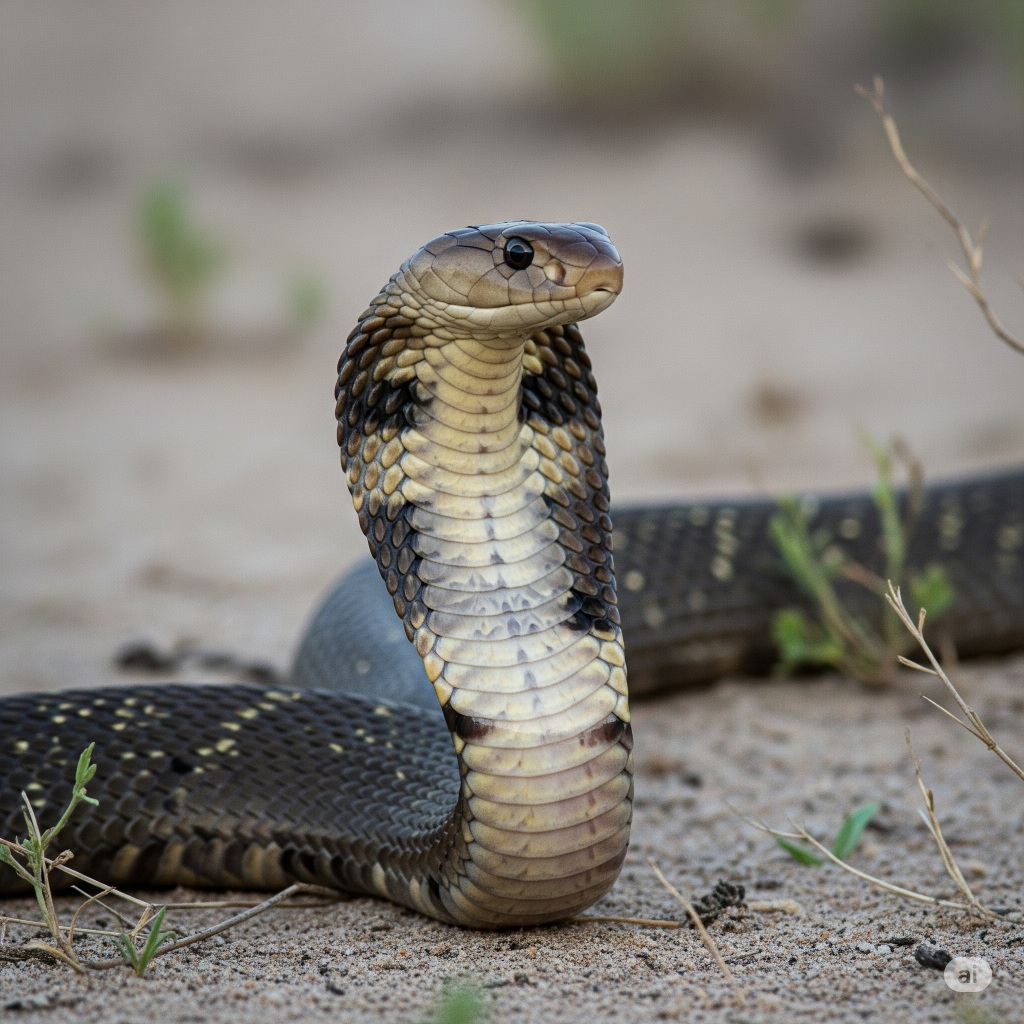
Characteristics
- The Siamese spitting cobra has a smooth body, typically with a shiny, black or dark brown appearance, and may feature a lighter band across the neck.
- It can grow up to 2 meters (6.5 feet) in length and displays a distinctive hood.
Behavior
- This species is known for its aggressive defensive posture and ability to accurately spit venom at the eyes of predators.
- It is primarily nocturnal but can also be active during the day.
Venom
- The venom contains powerful neurotoxins that can cause paralysis and respiratory failure if untreated.
- The venom can also lead to localized pain and swelling.
Geographic Range
- The Siamese spitting cobra is found in Southeast Asia, particularly in Thailand, Cambodia, Laos, and Vietnam, preferring moist habitats near water sources.
6. Javan Spitting Cobra (Naja sputatrix)
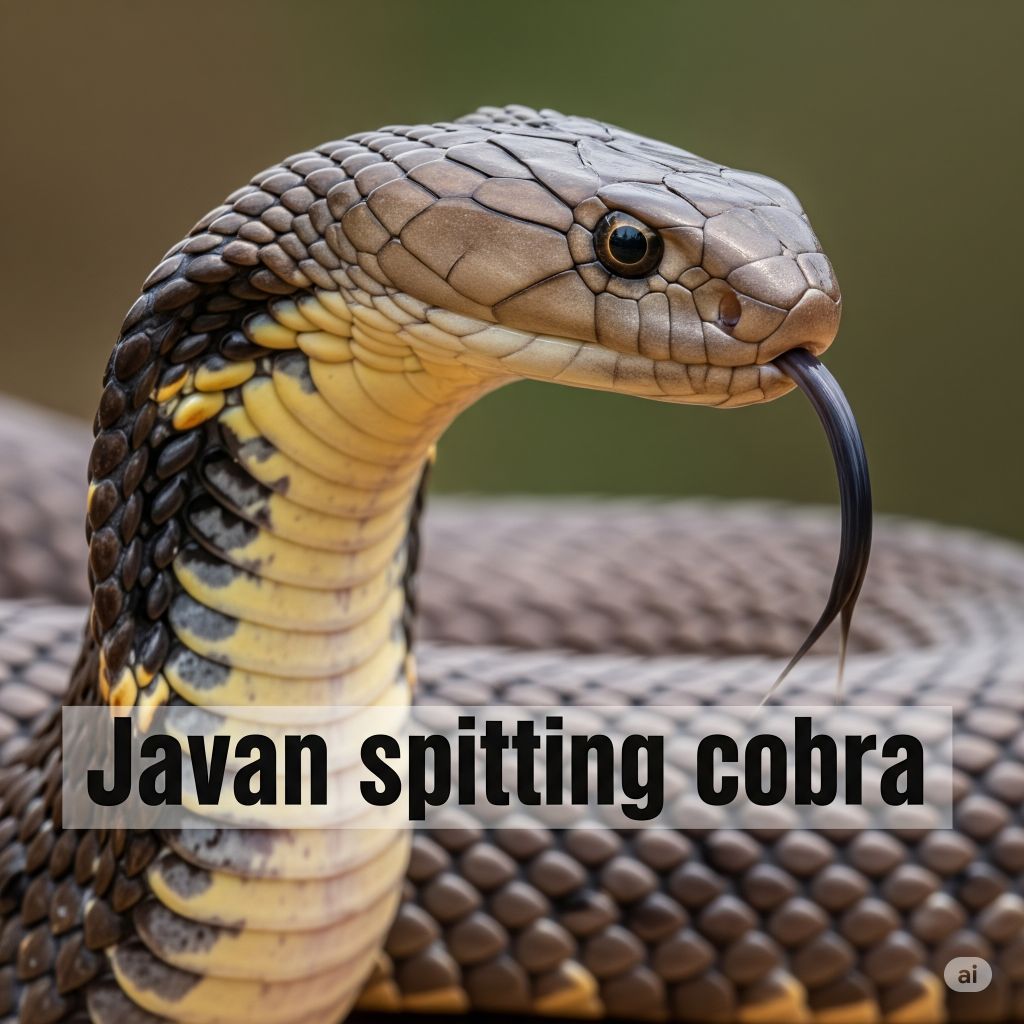
Characteristics
- The Javan spitting cobra is characterized by its slender build and prominent hood, which can vary in color from brown to gray.
- They can reach lengths of around 1.5 meters (5 feet).
Behavior
- Known for its defensive behavior, the Javan spitting cobra can spit venom accurately to protect itself from threats.
- This species is generally active at night.
Venom
- The venom of the Javan spitting cobra can cause severe pain and swelling, affecting both the nervous and muscular systems.
- The risk of serious envenomation is high, and bites require immediate medical attention.
Geographic Range
- As the name suggests, the Javan spitting cobra is endemic to Indonesia, primarily on the island of Java, and can be found in various habitats, including forests and agricultural areas.
7. Mozambique Spitting Cobra (Naja mossambica)
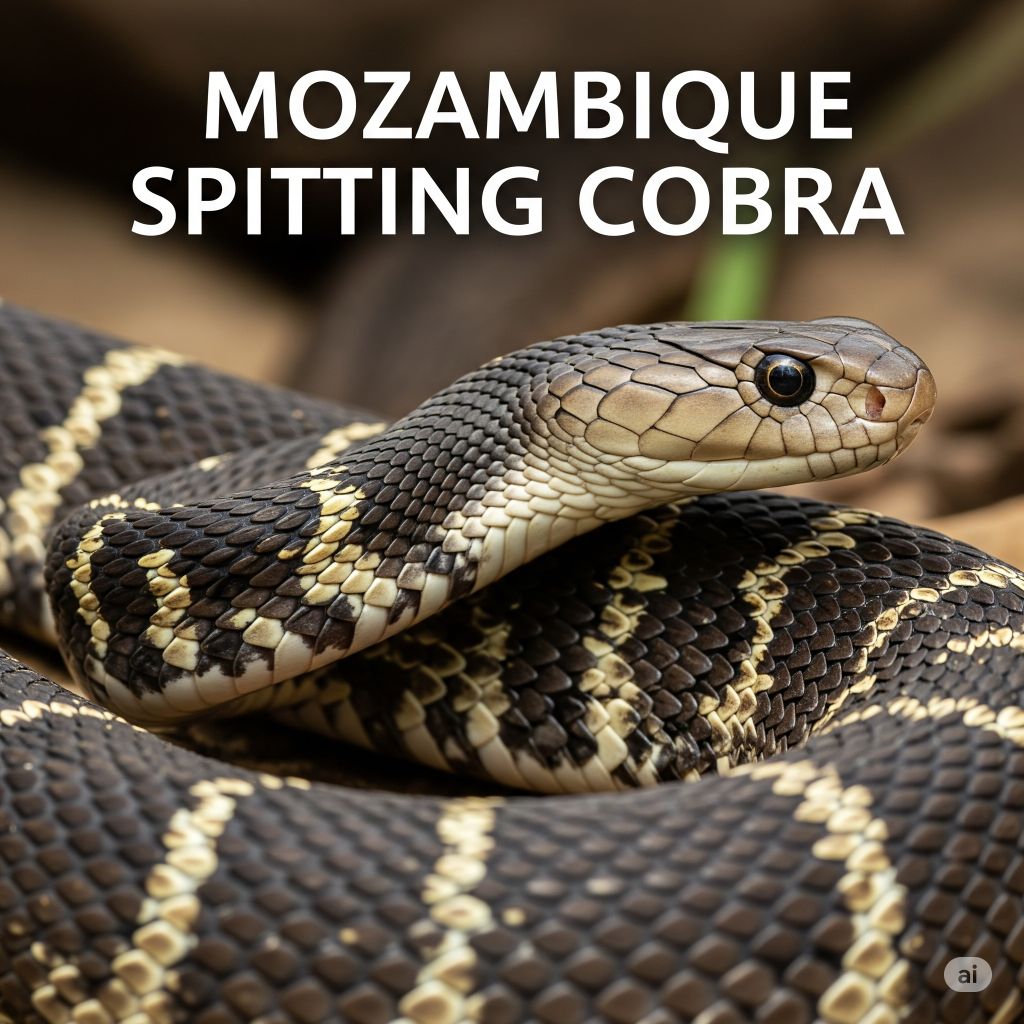
Characteristics
- The Mozambique spitting cobra typically has a dark brown or black body with a lighter underbelly and a well-defined hood.
- It usually reaches lengths of about 2 meters (6.5 feet).
Behavior
- This species is known for its ability to spit venom at attackers from a distance, and it is generally considered quick and aggressive when threatened.
- The Mozambique spitting cobra is often active during the day.
Venom
- Its venom is highly toxic, containing neurotoxic and cytotoxic components that can cause severe pain, swelling, and potentially life-threatening complications.
- Bites require immediate medical intervention.
Geographic Range
- Found in southeastern Africa, particularly in Mozambique, South Africa, and Zimbabwe, this species prefers habitats near water sources such as rivers and lakes.
8. Indochinese Spitting Cobra (Naja siamensis)
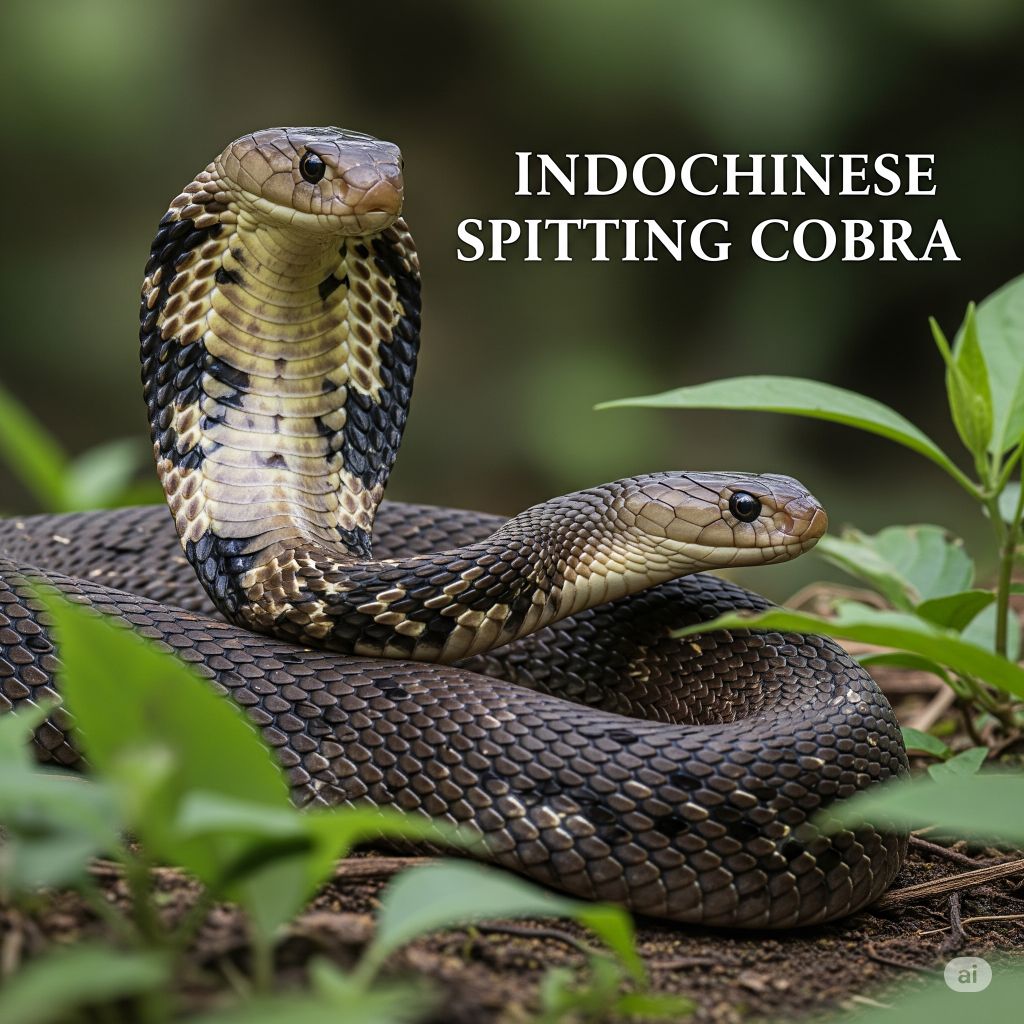
Characteristics
- The Indochinese spitting cobra exhibits a slender body, typically dark brown or black in color, with a defined hood.
- It can grow up to 1.5 meters (5 feet) in length.
Behavior
- This species is noted for its defensive abilities, including spitting venom accurately when threatened.
- It is primarily nocturnal but may be active during the day in search of food.
Venom
- Its venom is potent, causing severe multiple organ failures and local tissue damage.
- Immediate medical attention is crucial for bites.
Geographic Range
- The Indochinese spitting cobra is found in Thailand, Cambodia, Laos, and Vietnam, typically in moist lowland forests.
9. Equatorial Spitting Cobra (Naja sumatrana)
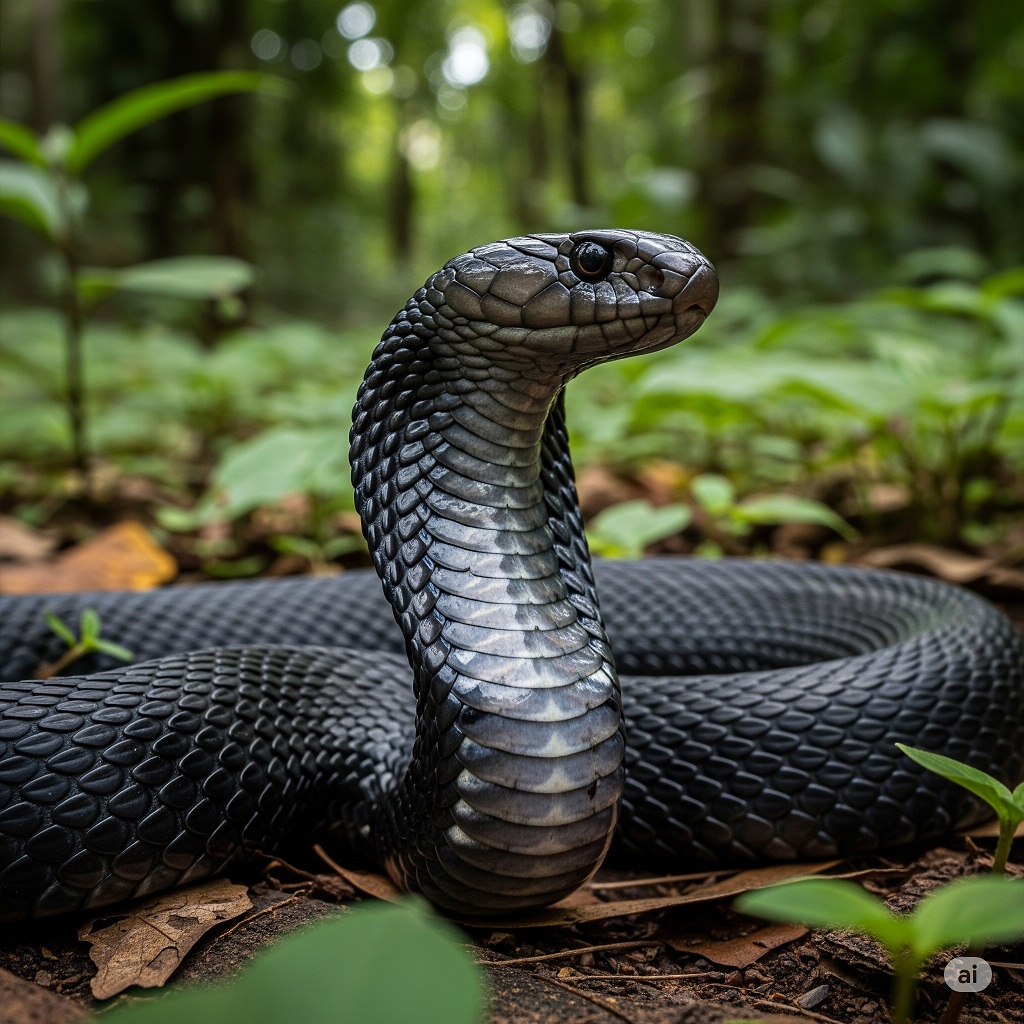
Characteristics
- The Equatorial spitting cobra is characterized by its robust body and potentially variable coloration, which can range from brownish to yellowish.
- It has a prominent hood that it displays when threatened.
Behavior
- Known for its defensive spitting behavior, this cobra can effectively target its venomous spray at perceived threats.
- It is predominantly nocturnal, hunting under the cover of darkness.
Venom
- The venom is highly toxic, leading to severe pain and tissue damage if it makes contact with skin or eyes.
- Bites from this species require urgent veterinary attention.
Geographic Range
- The Equatorial spitting cobra is found in Southeast Asia, specifically on the islands of Sumatra and Borneo, occupying various habitats, including rainforests and agricultural areas.
Evolutionary Significance
The ability to spit venom has evolved independently in different species of cobras, a remarkable case of convergent evolution. Each species developed this capability as a means of defense, allowing them to deter predators and minimize the risk of injury during confrontations. The evolutionary timeline suggests that the spitting mechanism may have emerged alongside the evolution of early hominins, correlating with increased threats from larger animals.
Benefits of Spitting
Spitting cobras primarily use their venom for defensive purposes. This specialized adaptation reduces the likelihood of direct encounters with predators. By enabling them to attack from a distance, spitting cobras greatly decrease their risk of injury in confrontations. While they can inject venom through bites to capture prey, spitting serves as a deterrent to larger threats, ensuring their survival.
Conclusion
Spitting cobras are extraordinary snakes that exemplify unique adaptations found in nature. Their ability to accurately spray venom is not only a fascinating defensive mechanism but also a testament to the evolutionary processes that shape species over time. Understanding these snakes enhances our appreciation for their ecological roles and emphasizes the importance of conserving their habitats. As we learn more about these remarkable creatures, we gain insight into the delicate balance of ecosystems and the value of biodiversity.

94% of pet owners say their animal pal makes them smile more than once a day. In 2007, I realized that I was made for saving Animals. My father is a Vet, and I think every pet deserves one. I started this blog, “InPetCare”, in 2019 with my father to enlighten a wider audience.
